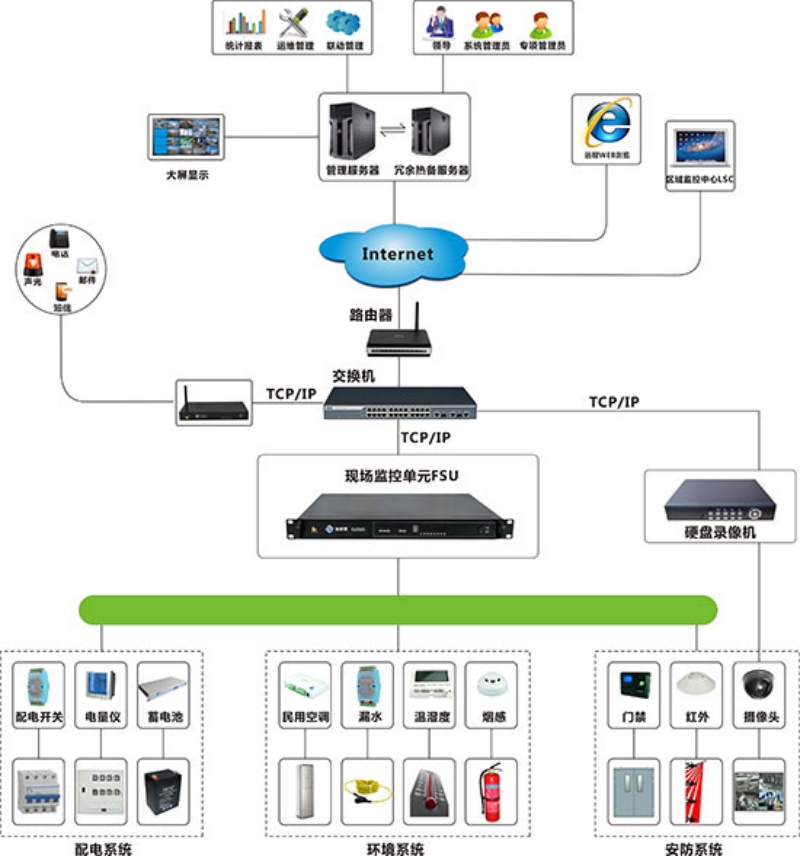Project Background
With the comprehensive transformation of the power network, substations are required to be unattended to improve the production efficiency of the power system. Therefore, it is necessary to establish a set of technologically advanced and powerful monitoring system to ensure the normal operation of substation and communication room equipment, realize the monitoring of equipment operation data, environmental parameters and video images of each substation and communication room, and be able to grasp the operation of each substation and communication equipment in real time and directly, and deal with the faults that occur on site in a timely manner to adapt to the rapid development of the power system.

Composition of the program
The power substation monitoring solution is divided into three levels from the bottom to the top of the functional structure: data acquisition layer, data processing layer and centralized management layer, which are processed by the station-side monitoring unit and the main control center (master station) respectively. The data acquisition layer is distributed in the substation computer room and the central computer room at the provincial, municipal and county levels. The substation side deploys the station-side monitoring unit to realize the data acquisition of the computer room environment and communication power equipment through sensors or intelligent interfaces, realizes the access, processing and storage of non-video data at the monitoring point, and organizes the Ethernet special line to the provincial company's main station through the PTN transmission network (the site without PTN coverage can use SDH). At the same time, the on-site status of the equipment can be transmitted to the power dispatching, power safety and security departments, operation inspection and other functional management departments in real time, so as to realize the sub-professional management required by each one, reduce the intermediate links of the original power management, effectively improve the efficiency of power supply management and the overall level of automation, reduce the cost of power supply management, and finally achieve the goal of reducing staff and increasing efficiency. The program consists of the following:

Application topology diagram
The host of the substation monitoring unit adopts a high-performance embedded acquisition host independently developed by Shenzhen Zonghengtong Information Technology Co., Ltd. It has rich port resources and data interfaces, an embedded Linux system, and its own data acquisition and processing functions. In large-scale deployment, it has the characteristics of low latency and fast speed when collecting data, which will not put pressure on the upper level monitoring platform. In addition, this host product fully draws on port multifunctional reuse and POE technology, reducing many unnecessary middleware during installation, minimizing failure points, and enabling quick and easy deployment. In addition, the monitoring host of Zonghengtong station adopts a dual power supply and dual network port design, which has high reliability. If one of the channels is interrupted, the other channel can be seamlessly switched to ensure the continuous and normal operation of the equipment. The system topology diagram is as follows:

Seamless protocol integration
The monitoring system of Zonghengtong power transformer station fully meets the requirements of the power grid system, and has strong protocol support capabilities, such as IEC-60870-5 series (101, 103, 104), IEC-60870-6 series, IEC-61850 series, DL/T 634.5104, DL/T 860, and MODBUS and other communication protocols, to realize the docking of dynamic environment monitoring system and power dispatching integrated data platform.




